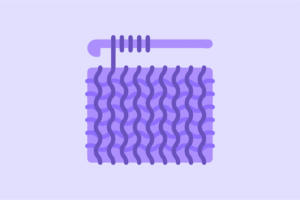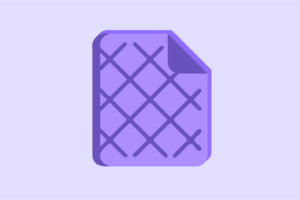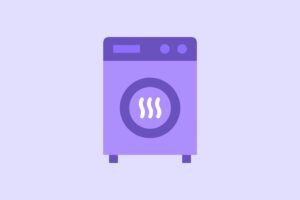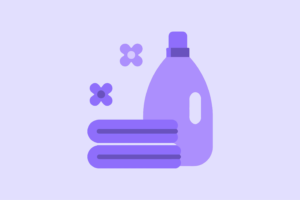How to Wash Blankets

- To preserve the quality of your blankets, it’s crucial to follow the manufacturer’s cleaning instructions, considering the material and weave before hand-washing or using a washing machine.
- Different types of blankets require specific washing methods, such as using cold water for delicate fabrics like wool and avoiding fabric softeners that might damage the material.
- Understanding the washing techniques for different blanket types, including fleece, crochet, and sherpa blankets, as well as the precautions needed for electric, weighted, and large comforter blankets, is essential to maintaining their durability and appearance.
While there are some blankets, like cotton blankets, that you can just throw into the washing machine, there are others that need to be hand-washed, dry cleaned, or spot cleaned. The material and weave primarily affect the way you clean a blanket.
Whether you’re sprucing up on your housekeeping or had an accident on one of your beautiful throw blankets, you’ll find your answers here in our collection of “How To’s.”
When cleaning a blanket, you should follow the manufacturer’s directions before trying anything else. The care instructions will direct you through the best way to clean your blanket without ruining the product.
If you don’t have access to the original manufacturer’s care instructions, you can follow the best practices outlined below. As a general rule of thumb, never wash your blanket in hot water. Fabrics like cotton and wool can shrink in hot water, while synthetic fibers can become damaged by the heat.
How to Hand Wash Your Blanket
 Using the washing machine makes cleaning blankets easy. However, there are times when throwing them into the wash will ruin your nice blanket. Colors can run, and certain fabrics can shrink or become damaged in the wash.
Using the washing machine makes cleaning blankets easy. However, there are times when throwing them into the wash will ruin your nice blanket. Colors can run, and certain fabrics can shrink or become damaged in the wash.
For times like those, follow the instructions below for hand washing.
- Fill a plastic bin with cold water and add liquid detergent. Make sure the water and soap are combined well.
- Submerge the material underwater and knead the fabric one section at a time.
- When the fabric has been thoroughly cleaned, remove the blanket and press the excess water out without wringing the material as it will cause it to misshapen.
- Repeat Steps 1 through 3 using clean water until there is no trace of soap.
- After pressing all the water from the fabric, place the fabric between two dry towels to draw out the water. This will speed up the drying process.
- Then, hang dry to preserve its shape.
How to Wash Fleece Blankets
 Fleece blankets are made with the sort of fabric where you can tell if it’s high-quality over time. Low-quality fleece peels, losing its lusciously soft feel. Meanwhile, high-quality fleece fibers, or ultra-plush fleece blankets, will not pill and remain soft for a very long time.
Fleece blankets are made with the sort of fabric where you can tell if it’s high-quality over time. Low-quality fleece peels, losing its lusciously soft feel. Meanwhile, high-quality fleece fibers, or ultra-plush fleece blankets, will not pill and remain soft for a very long time.
Either way, using the method below will help you keep your fleece blanket softer longer.
- Using the proper amount of laundry detergent, load the washing machine as you would normally: soap first and then the blanket.
- Wash with cold water set on gentle cycle.
- During the rinse cycle, add liquid softener.
- After washing fleece blankets, hang them on a clothesline to air dry. This will prevent the pilling that often occurs in the dryer.
How to Wash Wool Blankets
 Before washing a wool blanket, check to make sure it isn’t dry-cleaned only. The most considerable risk of cleaning your own wool blanket is shrinkage. After all, no one wants to buy a blanket sized for their mattress only to shrink it in the wash.
Before washing a wool blanket, check to make sure it isn’t dry-cleaned only. The most considerable risk of cleaning your own wool blanket is shrinkage. After all, no one wants to buy a blanket sized for their mattress only to shrink it in the wash.
In the next four steps, we’ll teach you how to wash your wool blanket without fear of damaging the material.
- Make sure your blanket is machine washable. If it’s not, reference the “Hand Washing” section. If it is, place mild detergent at the bottom of the drum and then the fabric.
- Set the machine to run on gentle cycle with cold water.
- One minute into the spin cycle, stop the machine so the blanket does not stretch.
- Hang dry on a rack or clothesline. Placing the wool in a heated dryer will shrink the material. It is often best to dry wool blankets away from direct sunlight, but check the laundry care symbols to be sure.
How to Wash Crochet Blankets
 Washing a crochet blanket is similar to washing a knitted blanket. You have to be careful not to stretch the yarn and distort the blanket’s shape. We suggest hand washing these types of blankets using the hand-washing method.
Washing a crochet blanket is similar to washing a knitted blanket. You have to be careful not to stretch the yarn and distort the blanket’s shape. We suggest hand washing these types of blankets using the hand-washing method.
However, if you want to clean your crochet or knit blanket in the washing machine, we suggest putting the material in a garment or mesh bag before placing it in the machine. The bag will protect the blanket.
Make sure the wash cycle is on a gentle or permanent-press cycle.
Lay the blanket flat and reshape the material after washing. Air drying is the best way to dry the knit blanket. Even though the drying time will be higher, it will ensure the fabric won’t shrink.
How to Wash Sherpa Blankets
 Sherpa blankets should be washed in a front-load washing machine –or a washing machine without the center agitator– with non-detergent soap. Detergents will damage the DWR – Durable Water Repellant – treatment that protects your blanket from allergens.
Sherpa blankets should be washed in a front-load washing machine –or a washing machine without the center agitator– with non-detergent soap. Detergents will damage the DWR – Durable Water Repellant – treatment that protects your blanket from allergens.
Do not place your sherpa blanket in the dryer. Even low heat can cause damage or melt the fabric. We suggest you hang dry the blanket, but you can tumble dry on low to fluff the material.
How to Wash Electric Blankets
 Washing heated blankets can be tricky. The wires running through the fabric can be hazardous if the washing isn’t done the right way. Generally, we recommend spot cleaning this blanket. If the electric blanket is a cheap $20 department-store brand, you might consider just getting a new one.
Washing heated blankets can be tricky. The wires running through the fabric can be hazardous if the washing isn’t done the right way. Generally, we recommend spot cleaning this blanket. If the electric blanket is a cheap $20 department-store brand, you might consider just getting a new one.
Heated blankets can start fires or electrocute you if the wires aren’t handled delicately. However, there are some electric blankets that are far too expensive to get rid of at the end of every winter. If you have one of these blankets, follow the directions below to clean your blanket safely.
- Before washing, disconnect the cord from the blanket –if you have a blanket that doesn’t detach from the blanket, make sure it isn’t plugged in– and check all the wiring in the fabric to make sure none of them have torn.
- If the blanket has a detachable cord, you may place the fabric in the washing machine and pre-soak for 5 to 15 minutes. You can use cold or warm water.
- If the blanket doesn’t have a detachable cord, you will have to hand wash the material without getting the control cord wet.
- Wash the detachable cord blanket in a partial wash lasting no more than 3 minutes on the delicate cycle using a mild detergent.
- Rinsing cycle should last no more than 1 minute.
- Let the blanket tumble dry for 5 to 10 minutes and then hang dry the rest of the way.
Older heated blankets don’t have the detachable cords. Because of this, they present a problem when you need to clean them. You don’t want the cord control to get wet, and you want to agitate the electrical cords in the blanket as little as possible.
- Soak the blanket in a tub of cool water combined with mild detergent for 15 minutes. Be careful not to let the electrical cord dip into the water.
- Press the soapy water out and rinse in cool water.
- Again, press the water out and hang until dry.
How to Wash Weighted Blankets
 Washing a weighted blanket isn’t recommended. The protective cover keeping the filling inside can rip, resulting in a damaged washing machine.
Washing a weighted blanket isn’t recommended. The protective cover keeping the filling inside can rip, resulting in a damaged washing machine.
Spot cleaning with a wet cloth and mild detergent will help keep your weighted blanket clean and is suggested on a weekly basis.
There are some weighted blankets that have covers that detach from the weighted portion on the blanket. You can throw the cover right into the wash like you would bed sheets or pillowcases.
How to Wash Large Comforters, Duvets, and Quilts
 Duvets come with detachable covers that protect the blanket from grime and can be placed in the washing machine. However, comforters and quilts are much too large to put in a washing machine.
Duvets come with detachable covers that protect the blanket from grime and can be placed in the washing machine. However, comforters and quilts are much too large to put in a washing machine.
While quilts should be taken to the dry cleaners to preserve their beauty and longevity, comforters can be placed in a commercial machine at the neighborhood laundromat.
- The comforter should be washed on the gentle cycle using cool or warm water using a mild detergent.
- Dry the blanket on low heat with several dryer balls or tennis balls. A dryer or tennis ball works as an agitator and will fluff the comforter while it dries.
Spot clean your comforter and quilt to minimize the amount of washing. This will lengthen the life of your blankets.
How Often Should Blankets Be Washed?
 Typically, a blanket needs to be cleaned once every two weeks, though people with allergy sensitivies may benefit from washing them once a week with their sheets.
Typically, a blanket needs to be cleaned once every two weeks, though people with allergy sensitivies may benefit from washing them once a week with their sheets.
Even though blankets are considered part of basic bedding, they often need a minimal protector, such as bedsheets – they separate the skin from the blankets, so they don’t get dirty as quickly.
Thicker duvets and comforters can be slipped inside a duvet cover to stretch out the time between washings. You can wash the cover with your sheets and clean the comforter or duvet once a season.
Tips and Tricks to Washing Blankets
 It’s critical to do the research before you wash your blanket. Simply throwing your blanket into the laundry machine without checking if the instructions say to machine wash it, clean it by hand or spot clean only, can destroy its feel.
It’s critical to do the research before you wash your blanket. Simply throwing your blanket into the laundry machine without checking if the instructions say to machine wash it, clean it by hand or spot clean only, can destroy its feel.
While knowing the strategies to washing high-quality blankets is half the battle, some helpful tricks make up the other half and will extend the life of your purchases. If you can, it’s smart to find out how a blanket will need to cleaned before you purchase it, as upkeep costs can add up when it comes to traits like ‘dry-clean only.’
Don’t Completely Dry Your Blanket
 As a general rule, don’t completely dry your blanket. It will shrink. There are also some blankets that may snag in the dryer, ruining the design of the fabric.
As a general rule, don’t completely dry your blanket. It will shrink. There are also some blankets that may snag in the dryer, ruining the design of the fabric.
Check on the blanket once every 20 minutes and take it out of the dryer when it’s about 80% dry. Then, hang it up and let it finish air drying.
Depending on your local climate and how thick and absorbent the blanket is, you may also be able to let it drip dry outdoors or inside the house, such as in the shower. Just keep in mind that some colors will fade when hung to dry in direct sunlight.
Skip the Fabric Softener
 Moderate use of fabric softener can condition your blankets so that they are softer, color fade- resistant, and pill-resistant. However, there are risks involving larger blankets, particularly with duvets and comforters. The liquid can be absorbed unevenly and cause spotting throughout the fabric.
Moderate use of fabric softener can condition your blankets so that they are softer, color fade- resistant, and pill-resistant. However, there are risks involving larger blankets, particularly with duvets and comforters. The liquid can be absorbed unevenly and cause spotting throughout the fabric.
Fabric softeners work by adding a waxy film that softens laundered items. With feathery-filled blankets, however, fabric softeners can destroy their feel with this film. Fabric softeners can also give other blankets a scratchy feel inside of the desired plushness.
Frequently Asked Questions
Is it safe to wash blankets in washing machine?
Yes, many types of blankets that are under 20 pounds can be machine-washed. But it’s important to double-check the blanket’s attached care label can be thrown into a laundry machine. Some blankets are woven so delicately that they need handwashing, while others have material that must be dry-cleaned to stay in good condition.
Why do people dry clean blankets?
Blankets that have a downy fill of feathers may be ‘dry clean only,’ such as classic white duvets. Similarly, blankets with silk or velvet fabric may not be machine-washable.
However, some blanket owners choose to dry clean bedding that can be machine-washed because dry cleaning can better preserve the bedding’s “new” look. The process of dry cleaning cleans a blanket down to the fiber level and avoids the damage from heat or water that traditional laundering can bring.
Can blankets go in the dryer?
It depends, as some machine-washable blankets can be damaged by a dryer and need to be hung up and air-dried. Too much heat can shrink or even fry the fibers, destroying it’s original comfort. Check the care label and make sure that if you use the dryer, you tumble dry the blanket on low heat.
How often should you wash blankets?
Ideally, you should wash blankets as often as you wash sheets, which is once a week. However, if the blanket is separated from you by a top sheet or another covering that keeps it from coming into contact with your body and absorbing oils and skin cells, you can stretch out the time between washings to every other week or even once a month.
For example, many cover a duvet or comforter with a duvet cover, which lets them wash or dry clean the duvet fill as infrequently as once a season. You can also place an unwashed blanket in the dryer on low heat for about 15 minutes to freshen up its feel.
How do I clean weighted blankets?
Weighted blankets typically cannot be machine washed in a home washer due to their heavy design. If you do wash your weighted blanket at home, you risk damaging your machine washer, not just the blanket itself.
Taking it to a laundromat can let you use a machine for heavier loads. Alternatively, a dry cleaner can clean it down to the fibers by using specialty chemicals, avoiding the damage that water can cause to a weighted blanket’s materials.
Did You Find Your Answer?
If you want your nice blankets to last, there’s more to cleaning than throwing them into the wash. Hand washing and spot cleaning can keep you from wrecking your blanket and extends its lifespan. Remember that most blankets only need mild detergent, and oftentimes hang drying will stop the material from stretching beyond its limits.
We are sure that if you follow the steps provided by this article, you’ll be able to wash your blankets while keeping their appearance.
